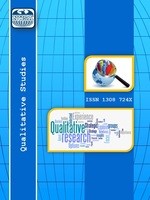Productivity of Rotifer Brachionus Plicatilis Cultured Under Batch System by Using Sugar Beet Molasses as A Substitute Medium
This study deals with the determination of availability of sugar beet molasses as a nutritional enrichment factor for rotifer cultures. A series of experiments under varying conditions such as ratio of sugar beet molasses in the nutrient complex were carried out in order to determine the effectiveness of sugar beet molasses as a carbohydrate and mineral source for the purpose of aquacultural operations. The culture water of Brachionus plicatilis with the salinity of 38% was treated through mechanical filtration and UV sterilization. 1 T cylindro-conical tanks are utilized for rotifer culture. Parameters of culture water were stabilized at values as following; Oxygen concentration:5 to 10 ppm, temperature: 270C and pH:6.8 to 7.4. Rotifers were counted by using Sedgewick Rafter Cell on a daily basis in order to determine increase of number of individuals. The study was conducted as 3 different trial groups, each consisting three separate tanks, so triplicate determinations were obtained. For the Group I, 10% molasses by weight of Culture Selco Plus (200 gr Selco Plus+20 gr molasses per tank) was added 6 times a day with 4 hours’ intervals. For the Group II, 20% molasses by weight of Culture Selco Plus (200gr Selco Plus+40gr molasses per tank) was added and lastly for the control group, Group III, no molasses has been added and 200 gr Culture Selco Plus was only added per tank. The addition of molasses to nutritive complex has a decreasing effect on the number of rotifer and increasing effect on the number of ciliate. From the study, it is clear that sugar beet molasses should not be used as an additional nutritional factor for rotifer cultures due to its decreasing effect on the number rotifers and stimulating effect on the ciliate booming. Addition of 10% and 20% molasses resulted in 31.4% and 23.3% decrease in number of rotifers at the time of T3, respectively. On the other hand, it was observed that addition of molasses in the nutritive complex has not affected on the percentage of rotifers bearing eggs.
Anahtar Kelimeler:
Sugar Beet Molasses, Ciliate, Brachionus Plicatilis, Rotifer, Culture Medium
___
- [1] Balkıs, N., (2004). Tintinnids (Protozoa: Ciliophora) of the Büyükçekmece Bay in the Sea of Marmara, Sci Mar, 68(1):33-44.
- [2] CCAP, (2010). Brachionus plicatilis (Mueller 1786) CCAP 5010/4, http://www.ccap.ac.uk/results.php?mode=basic&strainsearch=brachionus+plicatilis# (Cited 16.01.2010).
- [3] Çelik, İ., Önal, U. ve Ergün, S., (2007). Yüksek Yoğunluklu Rotifer, Brachionus plicatilis Üretim Sistemi Performansı, XVI. Ulusal Su Ürünleri Sempozyumu, 04-07 Eylül, Muğla.
- [4] Draycott, A.P., (2006). World Agriculture Series-Sugar Beet, Blackwell Publishing Ltd, p.451.
- [5] Düzgüneş, O., Kesici, T. ve Gürbüz, F., (1983). Statistical Methods (İstatistik Metodları), A.Ü. Ziraat Fakültesi Yayınları:861, Ankara, ss:185-186.
- [6] FAO, (2010). Manual on the Production and Use of Live Food for Aquaculture. http://www.fao.org/docrep/003/W3732E/w3732e00.HTM (Cited 23.09.2010).
- [7] Granvil, D.T., (1995). The Production of Live Food Organisms for Fishes. In: Nash CE, Novotny AJ: World Animal Science, Production of Aquatic Animals-Fishes, Elsevier Science B.V., The Netherlands.
- [8] INVE, (2010). Rotifer Culture and Enrichment. http://www.inve.com/INVE-Aquaculture/English/Products/Fish-hatcheries/rotifer-culture-enrichment/page.aspx/1073 (Cited 21.09.2010).
- [9] ITIS, (2010). Brachionus plicatilis (Mueller 1786) Taxonomical Serial, Number: 58435, http://www.itis.gov/servlet/SingleRpt/SingleRpt (Cited 16.02.2010).
- [10] Joachim, W.H. and Felicitas, P., (2000). Handbook on Ingredients for Aquaculture Feeds, Kluwer Academic Publishers, The Netherlands, 2000.
- [11] Koru, E. and Perçin, F., (2018). Characteristics of Biological Systems in Çamaltı Solar Saltworks (İzmir/Turkey), Qualitative Studies, 13(3):15-25, DOI: 10.12739/NWSA.2018.13.3.E0036.
- [12] Kütahya Şeker, (2010). Melas, www.kutahyaseker.com.tr/kupseker/melas.asp Cited 09.06.2010).
- [13] Lubzens, E., Zmora, O., and Barr, Y., (2001). Biotechnology and Aquaculture of Rotifers, Hydrobiologia 446/447:337-353. In: Developments in Hydrobiology, Rotifera IX, Sanoamuang L, Segers H, Shiel R.J. and Gulati R.D., Kluwer Academic Publishers.
- [14] OECD, (2002). Consensus Document on Compositional Considerations for New Varieties of Sugar beet: Key Food and Feed Nutrients and Anti-Nutrients, Environment Directorate, Organisation for Economic Co-operation and Development (OECD), Paris 2002 (ENV/JM/MONO (2002)4, Series on the Safety of Novel Foods and Feeds, No:3).
- [15] Özbaş, B., Göksan, T. ve Ak, İ., (2006). Brachionus plicatilis (Rotifer)’in Farklı Besin Ortamlarında Büyümesi, E.Ü. Su Ürünleri Dergisi, Cilt 23, Ek (1/2):279-282.
- [16] Özdemir, N., Alak, G. ve Çiltaş, A., (2007). Rotifer Kültüründe Biyoteknolojik Çalışmalar, Ulusal Su Günleri, 16-18, Antalya.
- [17] Stevens, C.V. and Verhe, R., (2004). Renewable Bioresources- Scope and Modification for Non-food Applications, John Wiley&Sons Ltd., England.
- [18] WoRMS, World Register of Marine Species, (2019). Available: http://marinespecies.org/aphia.php?p=taxdetails&id=23768(Cited 26.09.2019).
- [19] Türkşeker, (2010). Ürünler, www.turkseker.gov.tr/Urunler.
- [20] Zar, J.H., (1999). Biostatistical Analysis, 4th ed., 662 pp., Prentice Hall Inc., NJ.
- Başlangıç: 2009
- Yayıncı: E-Journal of New World Sciences Academy
